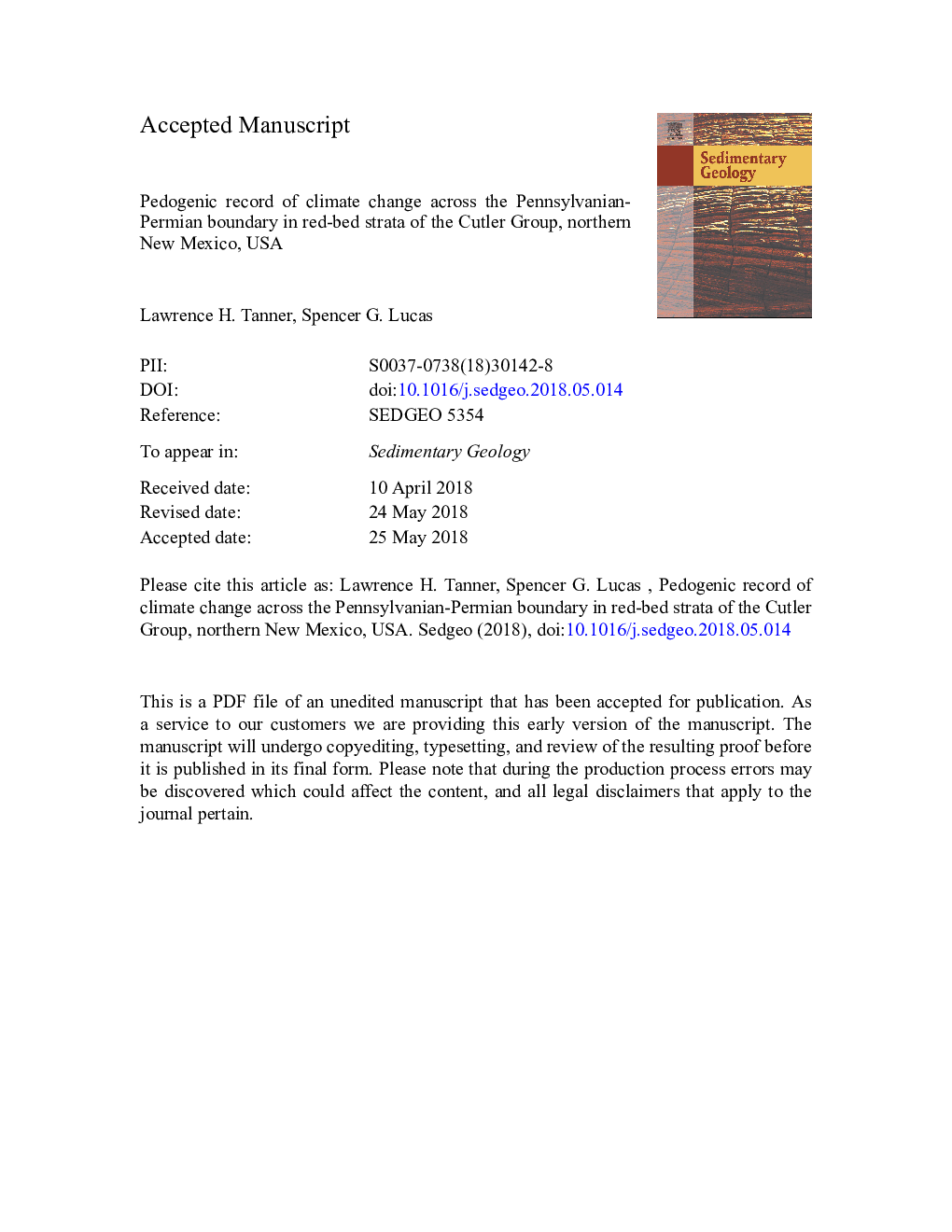| Article ID | Journal | Published Year | Pages | File Type |
|---|---|---|---|---|
| 8908469 | Sedimentary Geology | 2018 | 60 Pages |
Abstract
We recognized multiple paleosol types within these strata, including calcic Protosols, calcic Argillisols, argillic Calcisols and Calcisols, all generally consistent with the interpretation of a seasonal sub-humid to semi-arid climate. The calcretes in these paleosols occur primarily as truncated profiles. Although Calcisols occur in both formations, we note that Protosols are more common in the El Cobre Canyon Formation, and Argillisols dominate in the Arroyo del Agua Formation. Also, we find that the calcretes in the Arroyo del Agua Formation are generally thicker than those in the underlying El Cobre Canyon Formation. The difference in calcrete maturity could be explained by changes in source-area relief and sedimentation rate. However, stable isotope analyses of pedogenic carbonate indicate that a significant enrichment of δ18O occurs near the transition between the two formations, which approximates the Virgilian-Wolfcampian (equals Gzhelian-Asselian) boundary. Although the δ13C data suggest that pCO2 remained stable during the interval of deposition, the δ18O data are consistent with the interpretation of climate aridification across the Pennsylvanian-Permian transition, potentially related to the onset of Gondwanan glaciation in the earliest Permian.
Related Topics
Physical Sciences and Engineering
Earth and Planetary Sciences
Earth-Surface Processes
Authors
Lawrence H. Tanner, Spencer G. Lucas,
